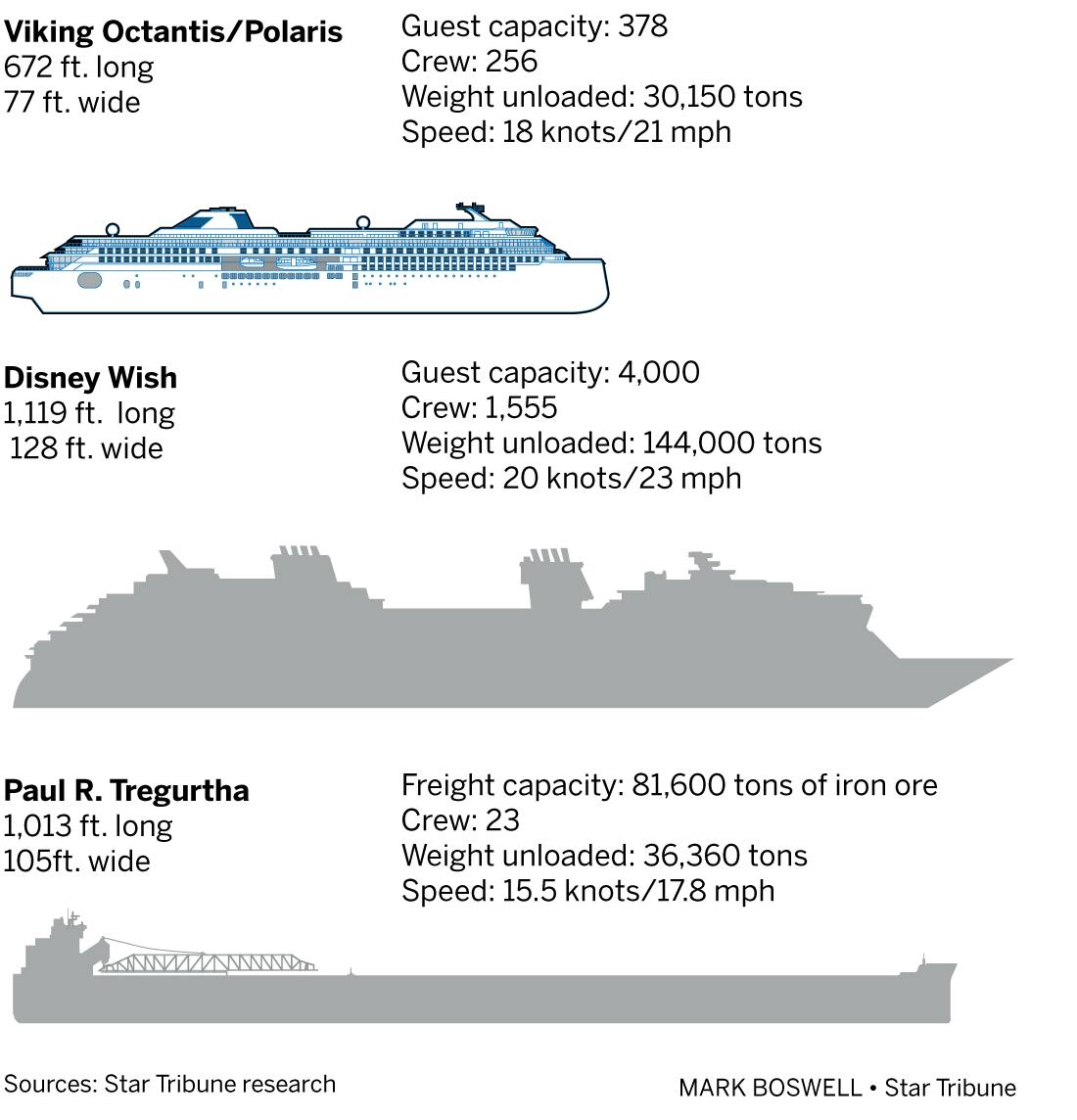Our pilot stood on the roof of the yellow submarine named John, floating beside a Lake Superior islet where cliffs rise straight from the water and end in a shock of pines.
Six passengers from the cruise ship Viking Octantis approached on an inflatable Zodiac motorboat. One by one, we climbed on top of the sub, then down the hatch into a submerged cockpit. I took my assigned seat and gazed out the panoramic windows. Today the waters of this big, cold lake, which are often crystal-clear, glistened with an opaque aquamarine.
The passengers, who had been together for the past six days on a Viking cruise of the Great Lakes, laughed nervously, remembering a casual line from the submarine safety video: "If the pilot becomes unconscious, press the green button." I eyed the green button, just below the controls.
We wouldn't be needing it.
The pilot, Philip, relayed our location to Octantis and filled the diving tanks with water, as the sub slipped below the surface. We gently descended, ever deeper into the turquoise abyss. At some 130 feet, Philip activated the thrusters and navigated to the base of a rock wall. I realized that Pyritic Island far above us was merely the tip of a tall sea stack. We were now at the bottom of it — and I was glimpsing the world's largest freshwater body as very few people have.
Submarine dives are just one way Viking is trying to thread the needle for leisure cruising and scientific exploration in Octantis' maiden season. When the Norwegian-flagged cruise line announced in 2020 plans for two new expedition-class ships, purposely built for Antarctica and the Great Lakes, it promised to be a sea change for tourism on our inland seas. The gleaming white, $225 million Octantis debuted in harbors from Toronto to Duluth this spring, on a string of lake-spanning itineraries. Its sister ship Polaris will follow in its wake.
In late July, I found my way onto Octantis' seven-day, Canada-centric "Great Lakes Explorer" cruise from Milwaukee to Thunder Bay, Ontario. I wanted to find out if the Viking experience lived up to the hype — and the luxury-caliber pricing. I went into it as something of a cruise skeptic. But I love the Great Lakes — so I had to be on this cruise.
New vistas
On a Saturday morning my cruise companion and I flew to Milwaukee and shuttled to the docked 665-foot Octantis, where a mostly retirement-age demographic lined up for vaccination and customs checks. Upon embarking on the 378-passenger ship, it was hard not to be dazzled.
A fifth-deck restaurant with sweeping views and an endless supply of chef-driven international food. A Nordic spa. A performance and assembly space backed by a two-story window. Spacious communal areas and hidden nooks, decorated with hundreds of — get this — books, immaculately curated around polar and discovery themes. How would they not slide off their shelves?


